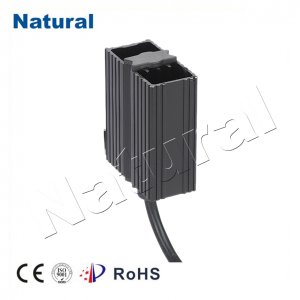Introduction

In recent years, the field of electronics has witnessed remarkable advancements, leading to the development of various innovative technologies. One such innovation is the small semiconductor heater, which has gained significant attention due to its versatile applications and energy-efficient heating capabilities. This article delves into the concept of the small semiconductor heater, its working principle, advantages, and diverse range of applications. The Working Principle
A small semiconductor heater operates on the principle of the Peltier effect, named after its discoverer Jean Charles Athanase Peltier. This phenomenon involves the generation or absorption of heat when an electric current flows through two different conductive materials. By creating a closed-loop circuit with a series of N-type and P-type semiconductors, the small heater can transfer heat from one side of the circuit to the other, depending on the direction of the current.
Advantages of Small Semiconductor Heaters
Energy Efficiency:Small semiconductor heaters are remarkably energy-efficient compared to traditional heating methods. They enable precise temperature control, reducing energy wastage and operational costs.
Compact Design:These heaters come in compact sizes, making them ideal for applications where space is limited. Their small form factor also allows for easy integration into various devices and systems.
Rapid Response:Semiconductor heaters offer quick heating and cooling cycles, ensuring swift temperature adjustments as needed. This feature is particularly valuable in applications requiring prompt temperature changes.
Uniform Heating:The design of these heaters promotes uniform heat distribution, preventing localized hotspots and ensuring consistent thermal performance across the heated surface.
Reliability:With no moving parts, semiconductor heaters have increased reliability and longevity, resulting in reduced maintenance and replacement costs over time.
Applications
Medical Devices:Semiconductor heaters find applications in medical devices such as blood analyzers, incubators, and temperature-controlled chambers. Their precise temperature control capabilities ensure accurate testing and safe sample storage.
Automotive Industry:These heaters are utilized in automotive systems for de-fogging windows, regulating cabin temperatures, and preventing freezing of critical components.
Consumer Electronics:Semiconductor heaters are integrated into devices like hair straighteners, curling irons, and heated seats, enhancing user experience by delivering efficient and controlled heating.
Industrial Processes:They play a crucial role in industrial processes such as soldering, resin curing, and chemical reactions, where precise and controlled heating is essential.
Aerospace:Semiconductor heaters contribute to maintaining optimal temperatures in spacecraft components, ensuring their proper functionality in extreme environments.
Greenhouse Agriculture:These heaters aid in maintaining stable temperatures in greenhouse environments, fostering optimal plant growth and protection against frost.
Conclusion
The advent of small semiconductor heaters has brought about a paradigm shift in the way we approach heating solutions. With their energy efficiency, compact design, and versatile applications, they have established themselves as key components in various industries. As technology continues to advance, it is likely that these heaters will evolve further, opening up new possibilities for innovation and efficiency in heating processes across diverse fields.
 28 items Patent
28 items Patent
 28 items Patent
28 items Patent
 28 items Patent
28 items Patent








